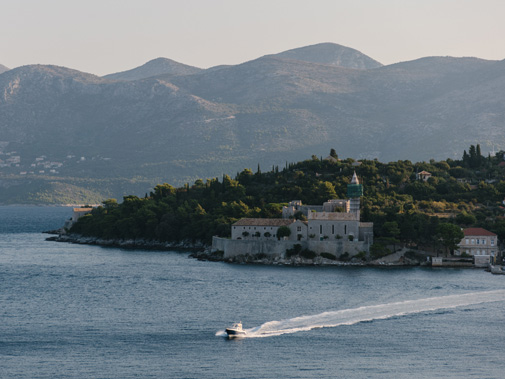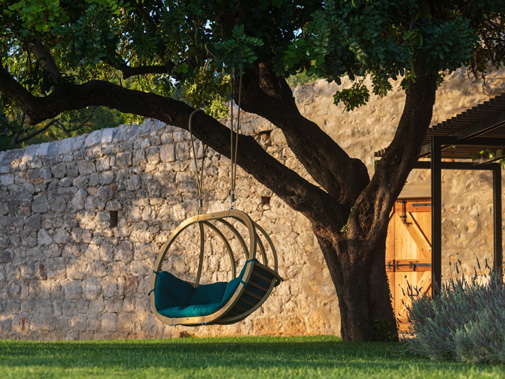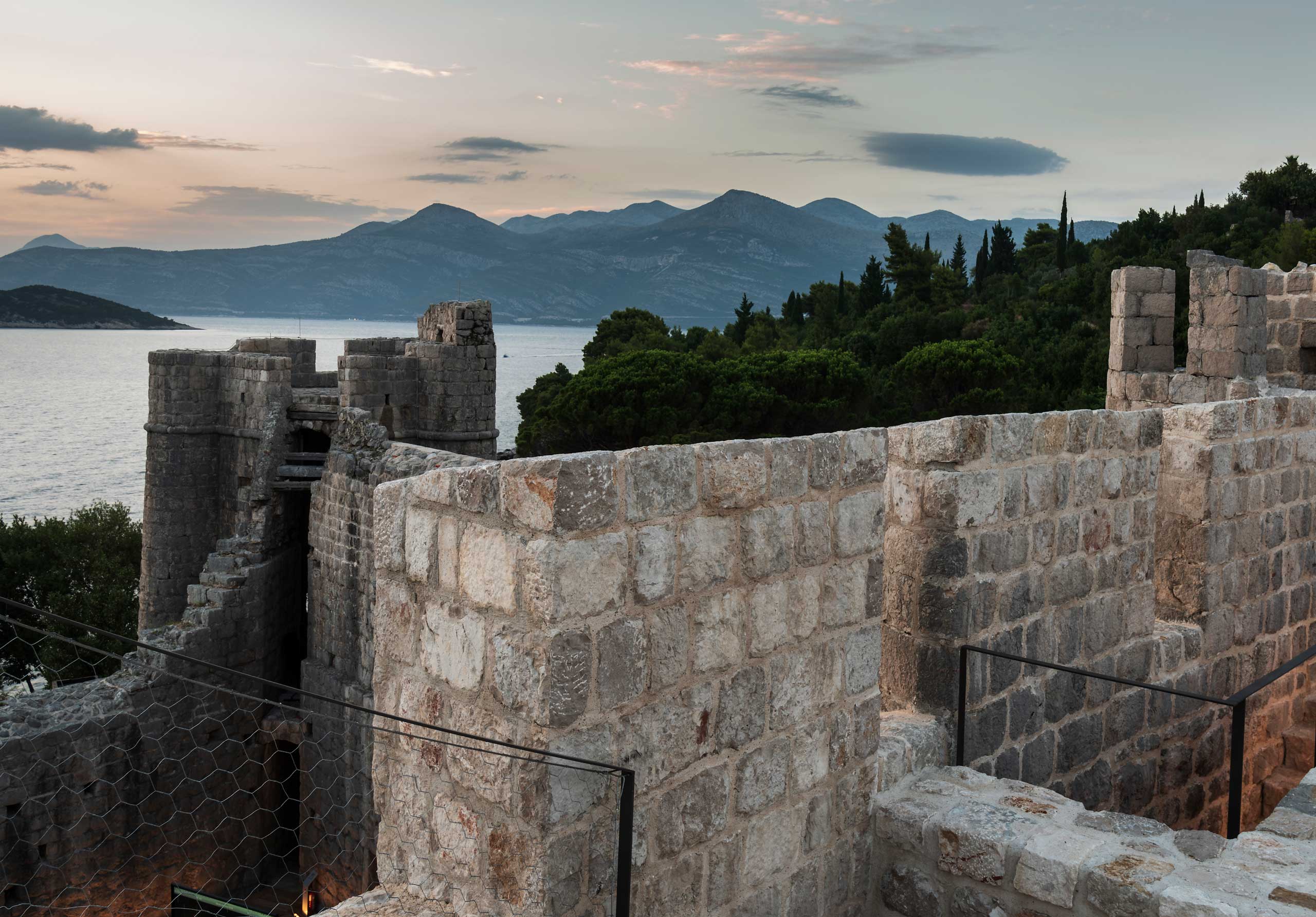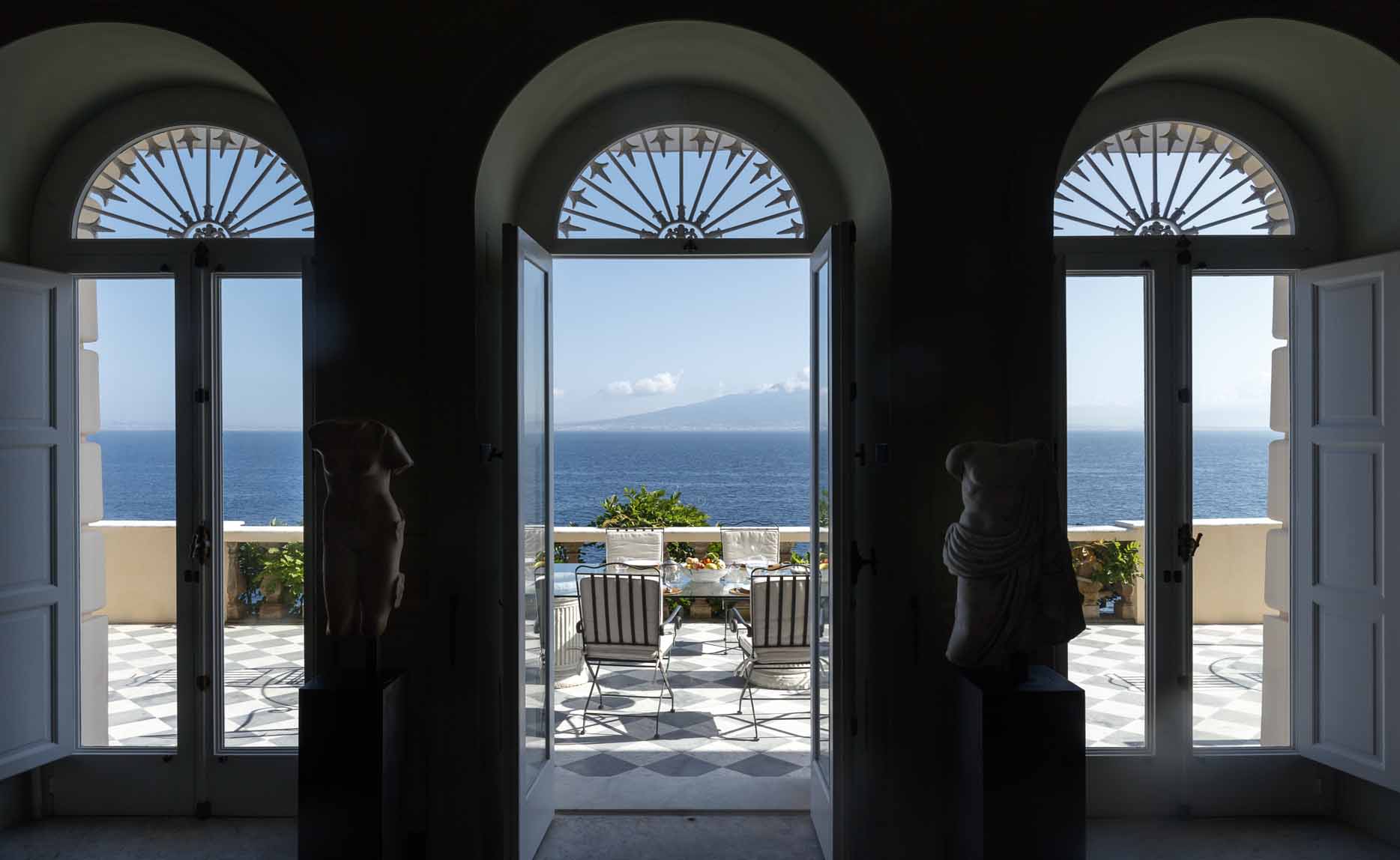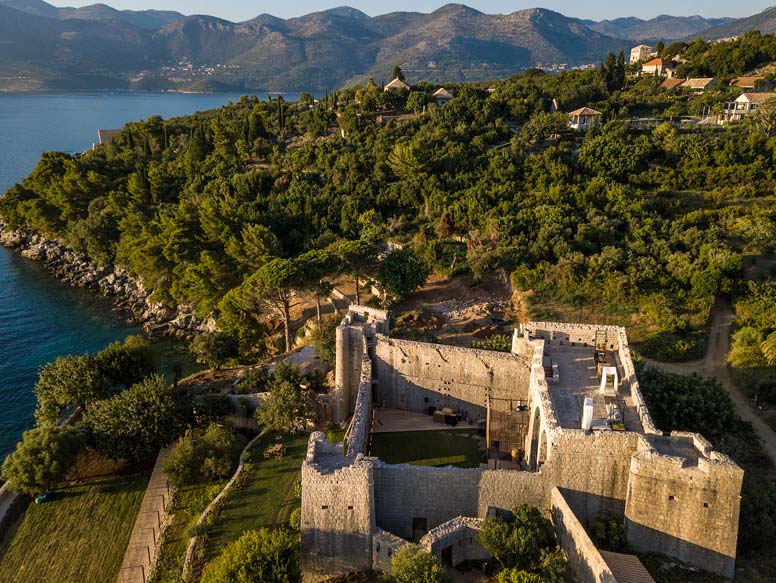Inhabited since Roman times, Lopud Island is the most famous of the Elaphiti islands. Located approximately 14 km from Dubrovnik, Lopud is known for its beautiful beaches, ancient fortifications and medieval churches.
Purchased by the Republic of Dubrovnik in the 11th century, Lopud became a seat for the republic’s governor in 1459 and many noble families built summer estates here. By the 17th century, 14,000 people were living on Lopud where the shipping industry and sea trade was flourishing. Sadly when the earthquake of 1667 hit, the island was never again able to attain its former glory and today less than 300 people live on the island.
The Lopud Franciscan Monastery
The Franciscan Monastery is located on the east side of the island overlooking Lopud Bay. The monastery and cloister were built in 1483, giving LOPUD 1483 its name. The development of a fortress began in 1592 in order to provide shelter to the island’s inhabitants and act as a means of defence against the attacks of Ottoman pirates. To strengthen the fortress’s function, two more walls and a bastion were added in 1613. Despite the damage caused by the earthquake, friars continued to live in the monastery until 1822 when it was deemed uninhabitable and was abandoned.
In 1992, it came to the attention of art collector, Francesca Thyssen-Bornemisza. Francesca arrived in war-torn Croatia to help restore Rennaissance paintings damaged during storage. After falling in love with the monastery and its fortifications, she spent the next two decades sensitively restoring it with the help of architect, Rujana Marković.
“After many years of sensitive restoration, where as much of the original fabric has been kept as possible, the reuse of this magnificent structure has been carefully thought through.“
Francesca Thyssen-Bornemisza
Restoration of LOPUD 1483
Merging history and heritage with privacy and sophistication, LOPUD 1483 exists today as a contemporary space hosting art, conferences, cultural events and private stays. The 13 original cells have been elegantly transformed into five private suites with views over the ocean or out onto the monastery’s medicinal gardens. Handmade furniture by Italian designer Paola Lenti sits alongside historic Renaissance pieces from the Thyssen-Bornemiza collection. In contrast, the walls are adorned with contemporary art pieces from the carefully curated TBA21 Collection.
However, the monastery is marked out by far more than its art. Guests are encouraged to spend time in the extensive gardens which are awash with Mediterranean greenery, herbs and native fauna, or taking in the sweeping views from the fortress. The carefully curated Sacred Garden created by Arctic shaman, Åsa Andersson, has nine stations designed for meditation and contemplation which are rooted in ancient Norse and Sami healing traditions. In another tranquil corner of the garden lies the traditional Franciscan Pharmacy, inspired by the monks who once lived here. Today, the garden is filled with citrus fruits and aromatic, medicinal herbs used in the Franciscan pharmaceutical tradition.

“It is of value to us to be able to experience its dynamic energy, soak in its peaceful atmosphere, explore its soulful gardens, enjoy its extraordinary undisturbed views and sunsets, just as I have imagined them while working on this dream for 20 years.”
Francesca Thyssen-Bornemisza
Visting Lopud Island
Easily reached from Dubrovnik by ferry or speedboat, Lopud is the perfect spot to relax. Once you have toured the historical sites, spend time walking or cycling along the island’s paths or unwinding on the sands of Šunj Bay, Lopud’s best beach.
